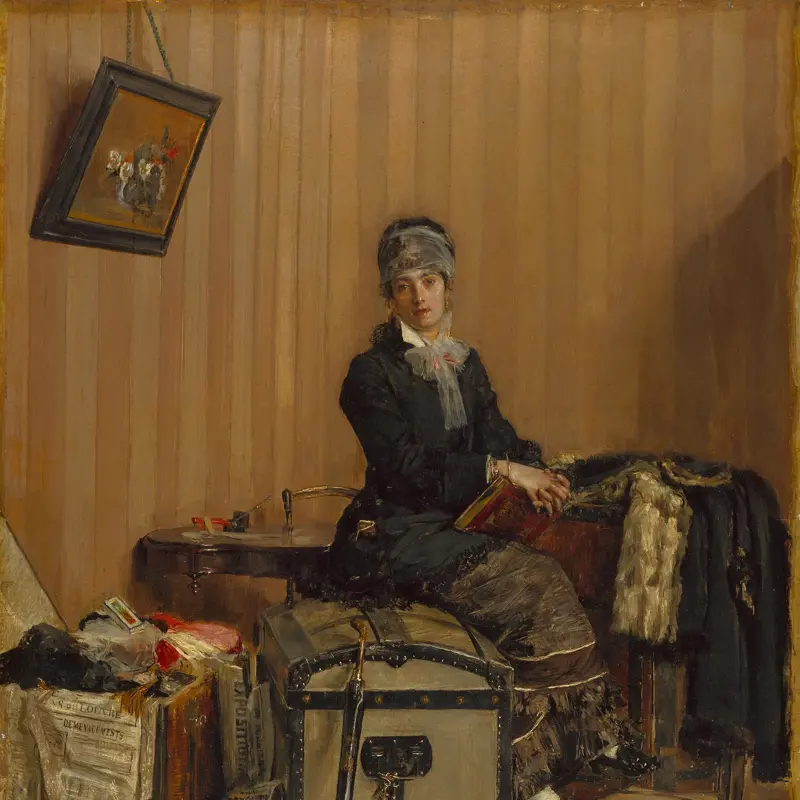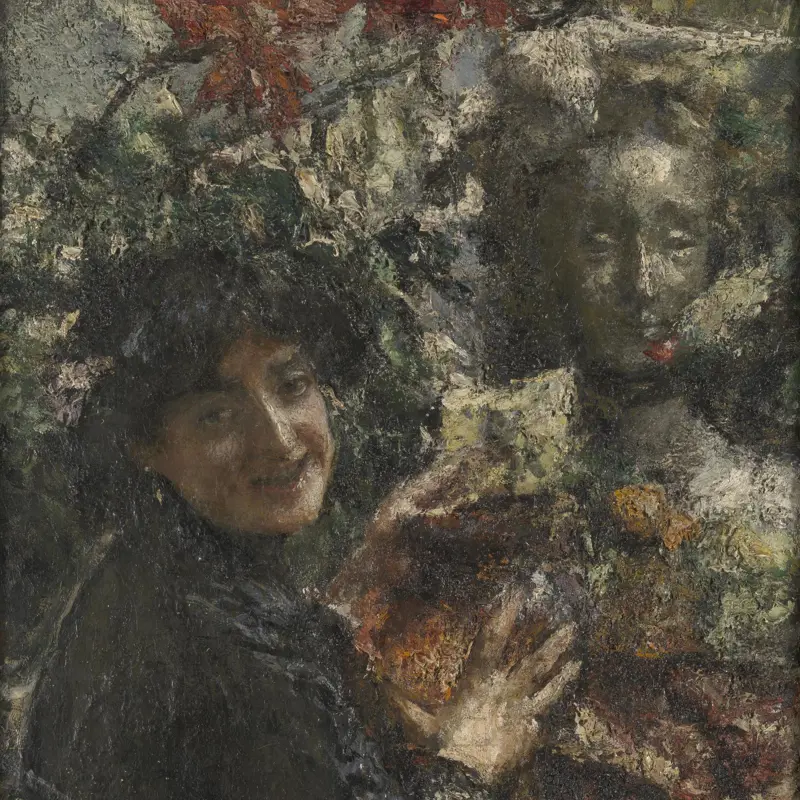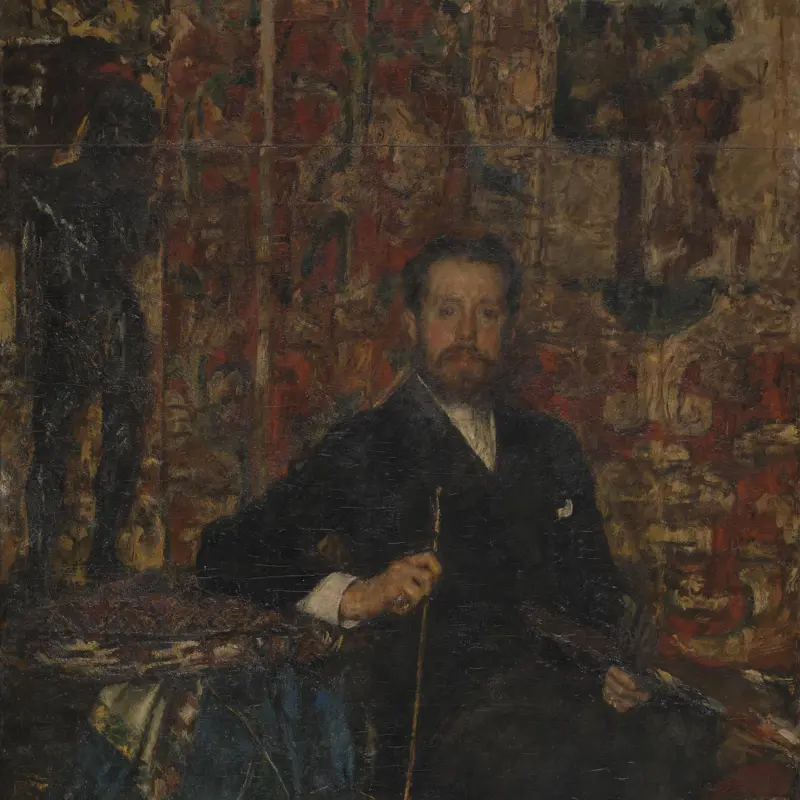Antonio Mancini, 'On a Journey', about 1903
About the work
Overview
An old man seated in a train carriage is interrupted in his reverie by our arrival with its hope that the boredom of a long journey will be alleviated. The painting is a character study of a uniquely modern experience, train travel, for which the model was Mancini’s father, Paolo, formerly a tailor in Naples. In the years around 1900 he lived with his son in Rome, overseeing his precarious mental health and frequently posing for him. The intensely worked surface of the painting, especially in subsidiary areas like the man’s clothing, makes the painting somewhat difficult to read, but such effects were much admired by contemporary collectors. One was his London patroness Mary Hunter, who arranged to show the painting at the Royal Academy in 1904, bestowing on it the French title En voyage. It came to the National Gallery with the Hugh Lane Bequest of 1917.
Key facts
Details
- Full title
- On a Journey
- Artist
- Antonio Mancini
- Artist dates
- 1852 - 1930
- Date made
- about 1903
- Medium and support
- oil on canvas
- Dimensions
- 96.5 × 57.8 cm
- Inscription summary
- Signed
- Acquisition credit
- Sir Hugh Lane Bequest, 1917, The National Gallery, London. In partnership with Hugh Lane Gallery, Dublin.
- Inventory number
- NG3256
- Location
- On loan: Long Loan to The Hugh Lane (2019 - 2031), Dublin City Gallery The Hugh Lane, Dublin, Ireland
- Collection
- Main Collection
Provenance
Additional information
Text extracted from the catalogue entry in Christopher Baker and Tom Henry, ‘The National Gallery: Complete Illustrated Catalogue’, London 2001; for further information, see the full catalogue entry.
Exhibition history
-
2006Long Loan to The Hugh Lane (2006 - 2019)Dublin City Gallery The Hugh Lane31 December 2006 - 18 April 2021
-
2021Long Loan to The Hugh Lane (2019 - 2031)Dublin City Gallery The Hugh Lane24 February 2021 - 23 February 2031
Bibliography
-
2001
C. Baker and T. Henry, The National Gallery: Complete Illustrated Catalogue, London 2001
About this record
If you know more about this work or have spotted an error, please contact us. Please note that exhibition histories are listed from 2009 onwards. Bibliographies may not be complete; more comprehensive information is available in the National Gallery Library.



